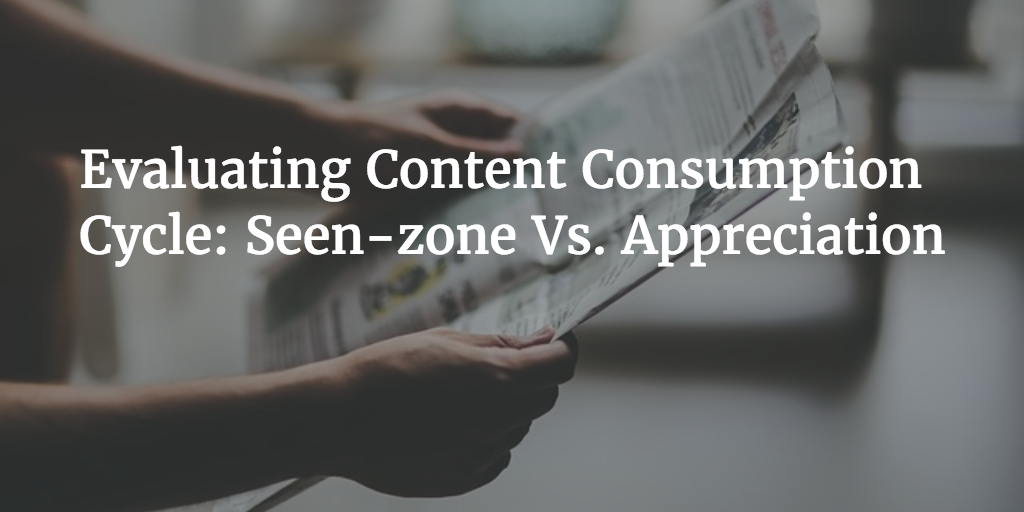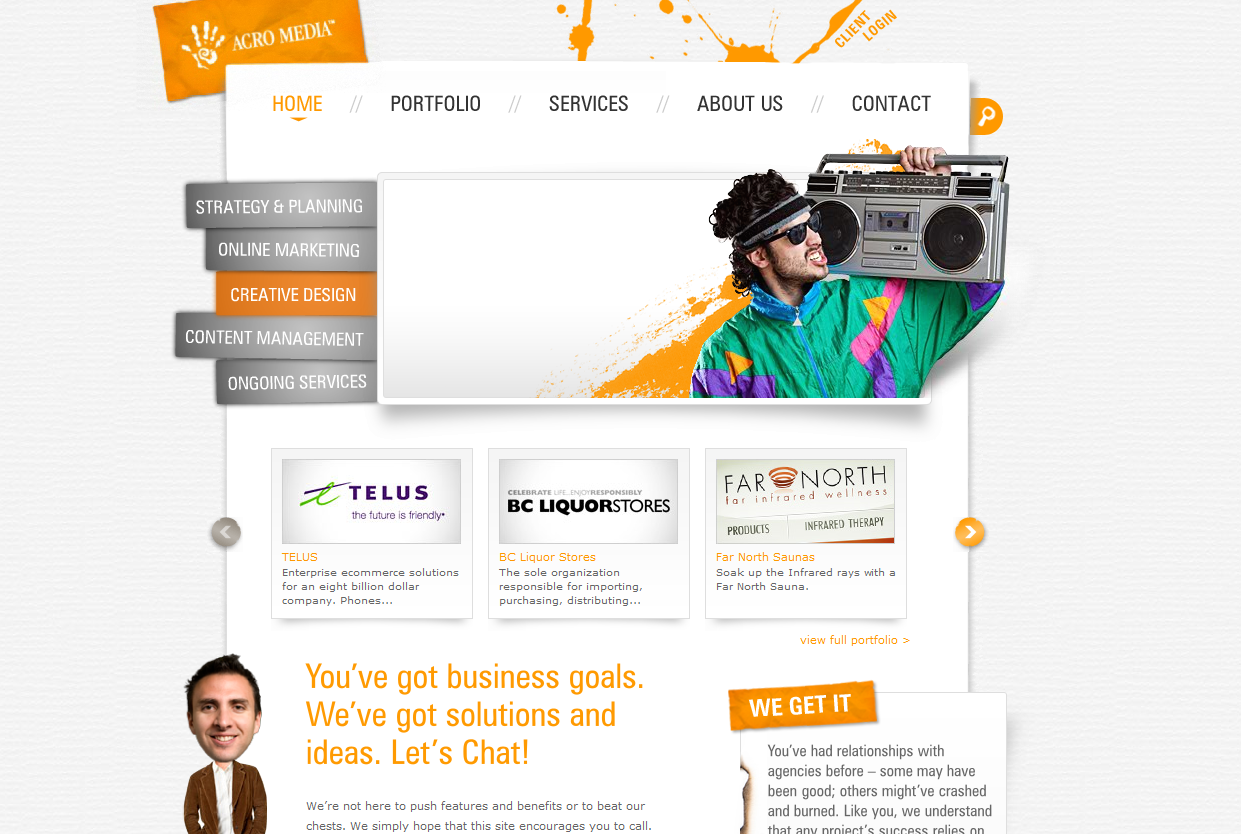Evaluating Content Consumption Cycle: Seen-zone Vs. Appreciation

Editor’s note: This post was written by Aby League. She is a researcher and has a Bachelor’s Degree in Biology. She is currently taking her Master’s while working as a freelance writer. She is also an innovator and technology enthusiast. Find her on Facebook, Twitter, and Google Plus.
You know what’s even more painful than being “friend-zoned?” It’s being “seen-zoned.” At least, in the former you know where you stand. You are a friend and nothing more. But when you are just being seen-zoned, it makes you a little paranoid. You begin to think: what could he or she be thinking about me? As much as this is a complicated stage with regard to human relationships, so is being seen-zoned a problematic phase in content marketing.
First and foremost, online content consumers do not always really read. They scan.
The human brain has now become so impatient that even a goldfish is now considered to have a more coherent thought. A study by Microsoft found that people now generally lose concentration after only eight seconds. So, are you still with us? We kept you for more than eight seconds. Congratulations to us.
It is important to understand what users and consumers do when they open a website or a blog. One thing’s for sure, they don’t have time to waste. If you want to say something, say it quick and say it well.
An eye-tracking research conducted at Missouri University of Science and Technology showed that users spend about 2.6 seconds scanning a website before focusing on a particular section. If you fail to get their attention immediately, you fail big time.
Your content strategy should ultimately include evaluating your content consumption cycle. This is to ensure that your content is actually being consumed and appreciated. Just because you have been seen-zoned doesn’t mean you don’t stand a chance. Consumers may “see” your content but whether they will take action or not is another story.
Here’s how to make your content stand out and ultimately go from being seen-zoned to being well-appreciated.
Make headlines scream

If your headlines do not make you feel anything, drop it. One study revealed that 80% of readers never make it past the headlines. Upworthy’s co-founder Peter Koechley also found that traffic can vary by as much as 500% based on the headline.
Keep these numbers in mind the next time you publish a content marketing blog. It is not enough that you have an in-depth and well-researched blog. If your headlines suck, not even the brightest of ideas can save you.
4 Tips to Writing Great Headlines
In writing the headlines, make sure that it delivers what it promises. Don’t trick people into reading your blog. Your headlines should also be very clear. No, readers don’t care about the light bulb at the end of an article so stop treating your headline as if it is a secret code. Don’t obsess over keywords because Google is way past that. Replace keywords with emotion and action.
To the left, to the left
Everything you want readers to focus on goes to that part on the left. Are you channeling your inner Beyonce yet? The pop superstar has a point. But enough about that and let’s talk about the Gutenberg diagram. It describes the pattern in which the eyes move. The primary optical area is at the top left corner, as proven by the result of the EyeQuant eye-tracking survey.
The Nielsen Norman Group also found that web users spend 69% of their time viewing the left half of the page. This explains why navigational icons in a vertical menu are always on the left just like most conventional layouts. So here’s a content marketing advice: focus on your left then move forward.
Make good first impressions
You don’t have a lot of time to make a good first impression. You only have an average of 180 milliseconds to be exact, according to the Missouri S&T eye-tracking research. That’s the only time they spend on focusing on one particular section before deciding to move on. Among the sections they fixate on are the institution’s logo, main navigation menu, search box, links to social media accounts, site’s main image, written content, and then finally the bottom of the page. Improve on these sections if you want to make a good impression.
Don’t forget to use images
Visual content is changing the whole content marketing landscape. You simply can’t do without them. Not when content with relevant images gets 94% more views than content without. The brain typically processes visuals 60,000 times than it does text, so considering the very short attention span, images will be a great help.
Make your content as visually appealing as possible. Instead of the boring graphs and charts, make a fun infographic or SlideShare presentation. Use high-definition photos in your headline and choose the ones that are relatable and able to pull emotional triggers. If you have a fun Top 10 list, use gifs or memes for easy sharing.
Readers need answers, provide them

Most content consumers access your website via a search engine like Google. When people type something on the search box, they are asking questions. They want answers. Your content must be able to give them that. But remember they just don’t want answers, they want answers fast. Always make your content clear, reader-friendly, and easy to scan.
Your answers should also be actionable and propose something they can do. If they ask for “ways how to transform a living room,” you must be able to guide them and provide options. It’s not about telling them what to do but giving them enough assurance that they know exactly how to do it. You also have to be accurate, specific, and engaging all at the same time. If you are able to provide an accurate answer to a query, you build trust and loyalty. You will always be that blog or website that people go to when they are somewhat lost.
Seen-zoned VS appreciation is a tough battle, but it can be addressed with the right piece of content.
It’s useless to throw countless of online content out there if they don’t communicate to your audience well. Every piece of content you publish must be worthy of attention and most of all, of appreciation.


